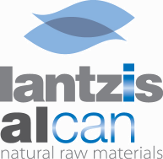Technically Specified Rubber (TSR)
Process:
Received cuplumps are spread out in the reception area for contamination picking and DRC determination.
Big Slabs of Cup-lumps must be reduced to smaller sizes for effective removal of the contaminants and determination of the contramination levels.
Contaminants removed , cup lumps are stored according to grade and rest to obtain leveled characterisitcs.
Upon designated time, cup lumps enter the STR line. Slab-cut, washed and strained to further remove embedded contaminants.
Contaminants not removed during the automated processes are removed by hands.
Processed cup lumps are collected in a tank with water overflowing to remove floating particles/contaminants such as raffia, woodchips, branches sinking material such as dirt, sand, gravel sinks to the bottom of the tank and remove periodically.
After series of size reduction, rubber crumbs are crepe in series of decreasing thickness to obtain aggregated rubber crumbs.
Crumbs are placed in trolley and oven-dried at 120 oC for 7-8 minutes depending on the nature of the input cup lumps
Biscuits are baled and packed in PE pouches
Bales are inspected and sampled for white spot/contamination Physical Characteristics.
Baled STR blocks are packaged according to the customer specifications.
Rubber bales are tested for the physical properties and are graded as such.
Ribbed Smoked Sheets (RSS)
Process:
We collect our "Raw Material" from local farmers, Rubber Sheet as it comes to us contain humidity and impurity that must be removed during the smoking and drying process.
RSS processing starts with the cleaning phase, rubber sheet is immersed in water tank with soap added, then passed through a cleaning machine to remove external dirt.
They are hanged on bamboo stem for drying, the rubber sheets are put into an oven of dimension of about 4m wide by 8m depth by 6m height and stay there for 3 to 5 days depends on the thickness of the sheet.
The oven is heat by wood that we obtain from old rubber tree, because the temperature inside the oven is maintained constant at about 70 degrees celsius.
After smoking, the rubber sheet becomes more transparent, impurity is hence more visible and removed. Smoked sheets are then classified into 5 different grades, namely RSS1, RSS2, RSS3, RSS4 and RSS5 depending on many factors such as purity, elasticity, color, etc...
For "Bale" packing, the rubber sheet is pressed by hydraulic machine into a cube shape with dimension 60cm x 60cm and weights about 111.11 kilogrammes/bales, which comply to international export packing.
For "Shrink Wrap", the rubber sheet is simply folded, put in a plastic bag of 35 kgs/bales, then 36 bles forms a pallet of 1260 kilogrammes/pallets.
The RSS bale is coated with white powder, mixture of kerosoine and calcium carbonate, the coating helps to: * protect the bales from sticking together, * ease to transprotation of the bales * ease the printing of "Shipping Mark" as required by customer.
Finished Ribbed Smoked Sheet is presented in several forms: "Bales" are coated in white with shipping mark printed and ready for delivery * "Shrink Wrap", Ribbed Smoked Sheet is not coated, but envelopped with plastic film, this packaging may provide better protection against weather (humidity or rain) during transport. * "Metal pallet" or "Good Pack" is also available.
Latex Process
The latex as it is collected contains above 70% water and dirt. Its been filtered in order to remove dirt and centrifugalise to get the latex from water. The final product is soluted in ammonia and put into steel drums of 205 kilos or flexi bags, in containers.
